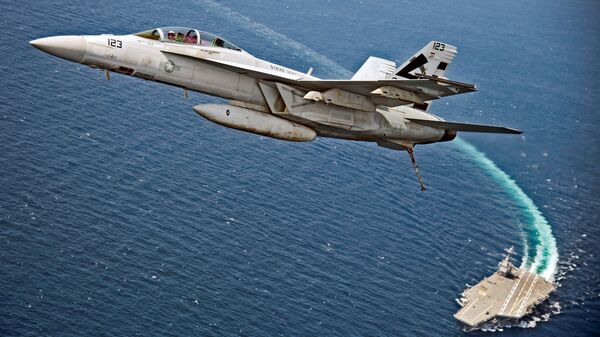The US Navy and Air Force have united their efforts and, potentially, budgets to develop a brand new network that will connect all the units available to the two military branches, Chief of US Naval Operations Michael Gilday stated during a speech on 5 December.
The technology will allow these units to communicate with each other, sharing sensor data, namely on a potential adversary's positions, movements, and actions. The reliability of the connection between every separate unit will be ensured by unmanned platforms, such as drones, E-2D Hawkeye aircraft, and even prospective vessels, like the so-called Future Frigate project.
"I think the biggest challenge for us is to join all the main command and control. We’re building netted weapons, netted platforms, and netted [command and control] nodes, but we don’t have an adequate net, and that’s a critical piece", Gilday stated.
The new technology is expected to allow the US to spread out its forces while making the work of enemy intelligence and reconnaissance harder. Connected via this new network, even dispersed US forces will be able to respond to an attack on any of them by using long-range weaponry and targeting enabled by this network.
According to Gilday, the need for the network arose due to recent developments in the Chinese and Russian militaries and in the way that they operate. He noted, namely, that the current architecture in the US military remains exposed to the two countries’ electronic warfare capabilities.
Gilday likened the new venture to the famous Manhattan Project that gave the US military a working atomic bomb, stressing the urgency of the new project.
"We would team our forces and, perhaps, our budget lines together, and start working toward a joint solution set fast, in a ‘Manhattan Project’ kind of way. Because we need it, it’s a serious gap that we need closed", he said.
The Naval Operations chief said that the new technology is expected to be ready between 2033 and 2035, but noted that it would be better if it happens earlier.
The US has named both Russia and China as possible "near-peer" adversaries in a future armed conflict and has been adjusting its military efforts, including in terms of developing new armaments, accordingly ever since.
Apart from developing new weapons, the US has been actively patrolling areas near China, specifically the South China Sea, under the guise of freedom of navigation missions, and staging military exercises near Russia’s borders with its NATO allies.




